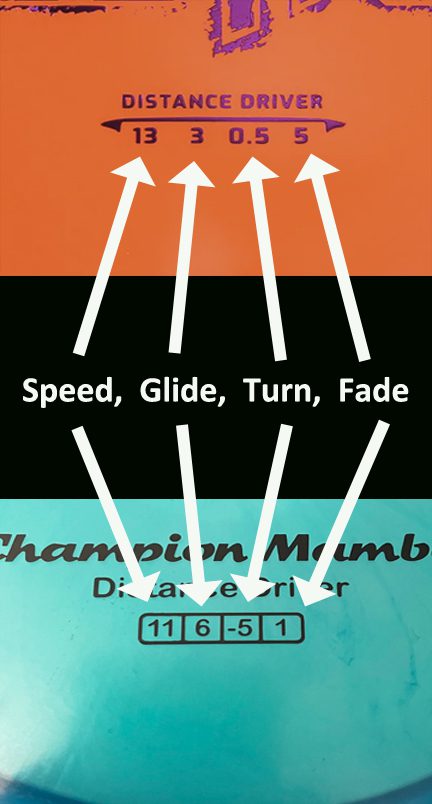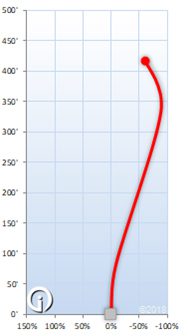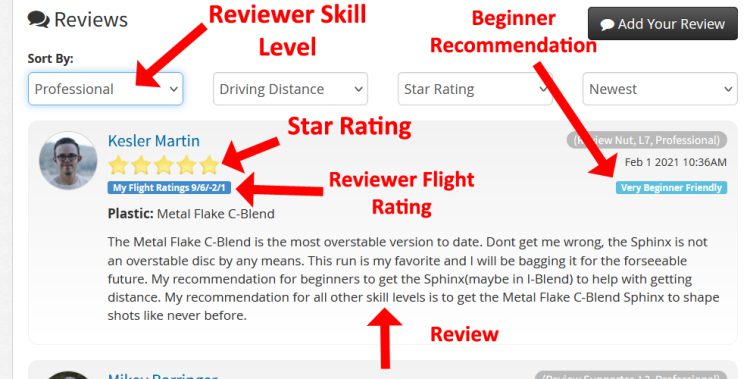Disc Flight Numbers Explained

When disc golfers are eyeing a new disc, their number one question often revolves around its flight behavior: “How does it fly?”
Understanding a disc’s flight characteristics is crucial in deciding whether it’s a worthy addition to one’s bag. While various factors like wind conditions, elevation, and the thrower’s skill influence flight, what matters most is how the disc will perform for them. This curiosity is often satisfied by examining the disc golf flight numbers.
Flight Numbers Decoded
To address inquiries about a disc’s flight, I typically delve into the widely used flight rating system and gauge the customer’s skill level to tailor my recommendations. Let’s unpack those flight rating numbers and explore some key variables I discuss with customers, including the more precise Infinite Discs flight rating system. For this discussion, let’s consider a right-hand, backhand (RHBH) throw.
Understanding the Four-Digit System
The four-digit flight rating system, pioneered by Innova, serves as a standardized way to characterize a disc’s flight. While other brands have experimented with their own methods, this system remains predominant. Here’s a breakdown of the four characteristics:
- Speed
- Glide
- Turn
- Fade

Speed
The first number signifies the speed at which the disc must be thrown for the subsequent numbers to hold true. It’s a crucial factor often misunderstood by beginners. A higher speed rating doesn’t guarantee the disc will fly faster; rather, it requires a greater throwing velocity for optimal flight. Beginners often struggle with high-speed discs, finding lower speed ones more manageable.
Glide
The second number indicates the disc’s ability to stay aloft. While maximum glide is desirable for long drives, experienced players may opt for lower glide discs for better control over landing zones. If you are a beginner, get a disc with as much glide as possible.
 Turn
Turn
Also known as ‘high-speed stability,’ this number predicts the disc’s behavior during the initial phase of flight, when it is traveling its fastest. Negative values imply a tendency to turn right (for RHBH throws), while positive or zero values resist turning, and are suitable for headwinds. ‘Understable’ discs exhibit more negative turn values, while positive values indicate ‘overstable’ discs.

Fade
The fourth number is the discs fade, or ‘slow-speed stability,’ and it indicates how the disc behaves as it slows down. Higher values result in quicker descent and leftward movement, while lower values maintain a straighter, level trajectory.
Infinite Discs Flight Ratings
While flight numbers offer a general idea of a disc’s flight, Infinite Discs introduced a more inclusive method which is based on user reviews. By aggregating reviewer feedback, this system provides a broader perspective on a disc’s flight characteristics. Users can filter reviews by skill level to find insights relevant to their game.
Let’s check out an Infinite Discs mold for an example. Looking at the page for the Sphinx we see two flight ratings: The manufacturers rating, and an Infinite flight rating. You can see that there is a slight difference between the manufacturer and reviewers numbers. In this case, there are 169 reviews (as of this writing).

Additional Benefits
Scrolling down the Sphinx’s page a bit we see some Sphinx data that might be useful for potential buyers. Below that are the reviews that Infinite flight rating for the Sphinx is based on. You will also see the option to sort the reviews based on certain criteria, such as reviewer’s skill level or driving distance. These options allow you to see the opinions of people with similar skills.

Looking Ahead
While the four-digit flight number system remains popular among players and manufacturers, future innovations may introduce even better methods. For now, the Infinite Discs Flight Rating system, supplemented by user reviews, serves as a better option. It is a valuable tool in choosing the perfect discs for your game.

Great explanation! Flight numbers, with the exception of the first number, which is based primarily on wing width are subjective to each player. Arm speed, angle, spin, and even your environment (e.g. high altitude) will change the last three numbers for each player.
Does the way you set flight numbers differ at all from the way Innova does flight numbers? There was Q&A video with Dave Dunipace where he said that you can’t compare flight numbers outside of the same speed class, so glide/turn/fade don’t really mean anything in a lot of cases. Example, 7/4/-1/3 eagle numbers are gibberish if compared to 10/4/-1/3 orc numbers are gibberish if compared to 12/5/-1/3 destroyer numbers. All are -1/3, but apparently they are only -1/3 relative to the other discs at the same speed.
It’s too bad these numbers are assigned based on the disc mold while disregarding other important factors such as the plastic the disc is made of. Old timers know (and newbies like me eventually figure out) that flight numbers aren’t sacrosanct, and that your heavy Champion Leopard will fly much differently than your lightweight DX Leopard.